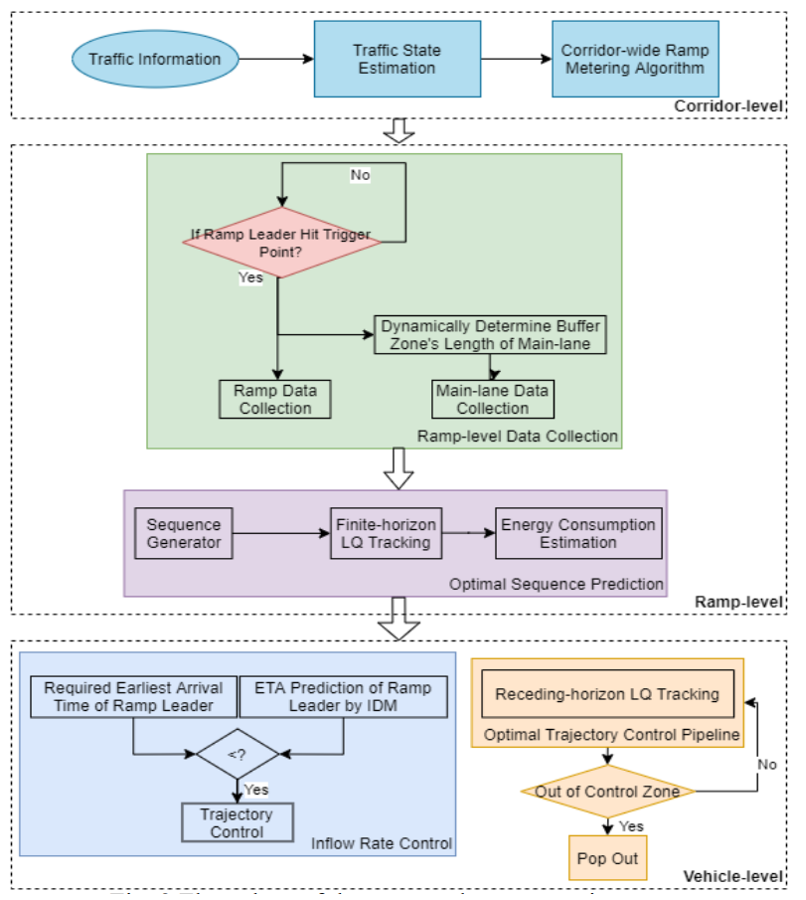Comprehensive cooperative driving automation system for safe and efficient ramp merging in mixed traffic environments. Implements hierarchical optimal control architecture spanning corridor, ramp, and vehicle levels with quantified improvements in mobility, sustainability, and safety.
Multi-level hierarchical control architecture combining corridor-wide ramp management with individual vehicle trajectory optimization using model predictive control and optimal control theory.

Hierarchical CDA ramp merging system architecture

Ramp merging geometry and control zones
Demonstrated significant improvements across mobility, sustainability, and safety metrics through comprehensive simulation studies in realistic mixed traffic scenarios.
![]() Optimal Control-Based Eco-Ramp Merging System for Connected and Automated Vehicles
Optimal Control-Based Eco-Ramp Merging System for Connected and Automated Vehicles
![]() The State-of-the-Art of Coordinated Ramp Control with Mixed Traffic Conditions
The State-of-the-Art of Coordinated Ramp Control with Mixed Traffic Conditions
![]() Corridor-Wise Eco-Friendly Cooperative Ramp Management System for Connected and Automated Vehicles
Corridor-Wise Eco-Friendly Cooperative Ramp Management System for Connected and Automated Vehicles
![]() Development of Eco-Friendly Ramp Control for Connected and Automated Electric Vehicles
Development of Eco-Friendly Ramp Control for Connected and Automated Electric Vehicles